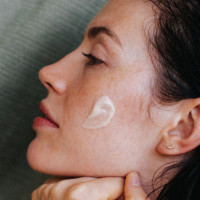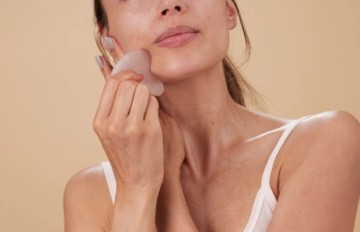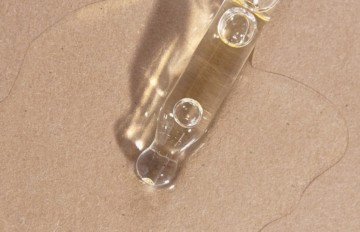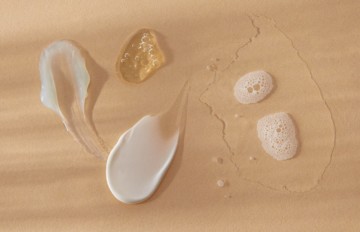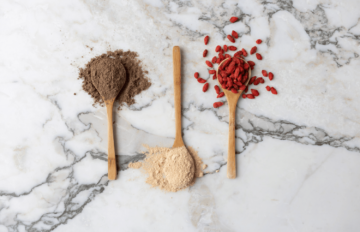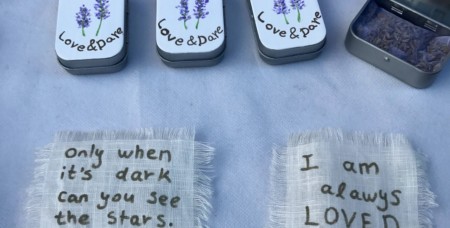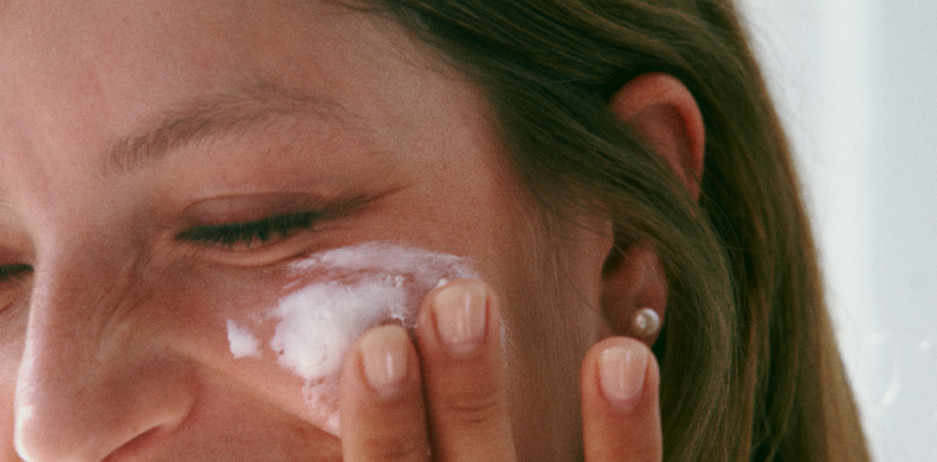
Can you exfoliate your face if you have oily skin?
The epidermis (the outermost part of the skin) is made up of five layers and is constantly regenerating.1 Dead cells in the stratum corneum – the most superficial layer – are naturally shed through a process called desquamation. However, in oily skin, this cell renewal cycle can be too fast.
Exfoliation and oily skin
If you were asked to describe the characteristics of oily skin, one of the first words to come to mind would be sebum. While we need sebum to maintain the hydrolipidic film, which protects the skin and helps to keep it supple, oily skin has too much of this greasy substance. This can result in a dull complexion, shiny skin from the middle of the day, and blemishes. Because sebum is produced in excess, it ends up clogging pores, preventing the skin from being able to breathe properly. The skin’s ability to play a protective role and prevent bacteria fro
If you have oily skin, it’s because your sebaceous glands produce too much sebum – an oily substance that helps to protect the skin. This overproduction can stimulate cell division and the renewal of skin cells, in an effort to manage and balance the excess sebum. As a result, dead cells and excess sebum build up on the skin’s surface.One way to support this natural process is by exfoliating your face, but it’s important to do it gently!

Does oily skin need to be exfoliated?
The main problem with oily skin is an overproduction of sebum. And while we need sebum to maintain the skin’s hydrolipidic film, too much of it can clog pores and weaken the skin’s ability to protect itself from bacteria. Consequently, the complexion becomes dull, the skin is shiny, and blemishes such as blackheads appear.
Contrary to popular belief, it is perfectly possible to use face scrubs on oily skin. These products cleanse and purify the skin, while helping to prevent spots from forming. Face scrubs refine skin’s texture and brighten the complexion by getting rid of dead cells and impurities. They also stimulate cell renewal and blood flow.However, it’s important to be aware that not all face scrubs are suitable for oily skin. This skin type is quite sensitive, and needs to be handled with care. So make sure you choose gentle face scrubs with small granules, or use chemical exfoliants.
What ingredients should you look for to effectively exfoliate oily skin?
If you’re looking for a face scrub that works well on oily skin, it’s worth knowing that some natural active ingredients are particularly suitable for this skin type. Aloe vera, for example, both soothes and hydrates, making it perfect for calming irritations without being heavy on the skin. Clay absorbs excess sebum while deeply purifying pores, and in doing so, it indirectly helps to reduce minor blemishes. Jojoba oil, a non-comedogenic botanical oil, is able to regulate sebum production while nourishing the skin. Other oils, such as almond and apricot, which are moderately comedogenic, are also suitable for use in face scrubs for oily skin as they don’t remain on the skin for very long.
Last but not least, active ingredients such as fruit acids (AHAs) gently exfoliate and promote cell renewal without any mechanical action. This makes them gentle on sensitive, oily skin, leaving it smoother and more radiant.

How often should you use a face scrub for oily skin?
If you have oily skin, always remember: be gentle! Use a face scrub in moderation, to avoid aggravating existing skin problems. There’s no point in exfoliating your skin every day, as this will only stimulate more sebum production and cell renewal.
The usual recommendation for oily skin is to exfoliate once every two weeks. This is sufficiently often to unclog pores, get rid of dead cells and regulate sebum production, without irritating the skin.
If you notice signs of dryness or irritation after using your face scrub, exfoliate less frequently.See all our masks, scrubs and creams for oily skin.
Discover our products
How should you exfoliate oil-prone skin?
To exfoliate skin prone to oiliness, begin by cleansing, then moisten your face and neck. Use a gentle, organic, cleansing and purifying product, such as Le Nettoyant Pureté, which is popular with combination, oily and blemish-prone skin.
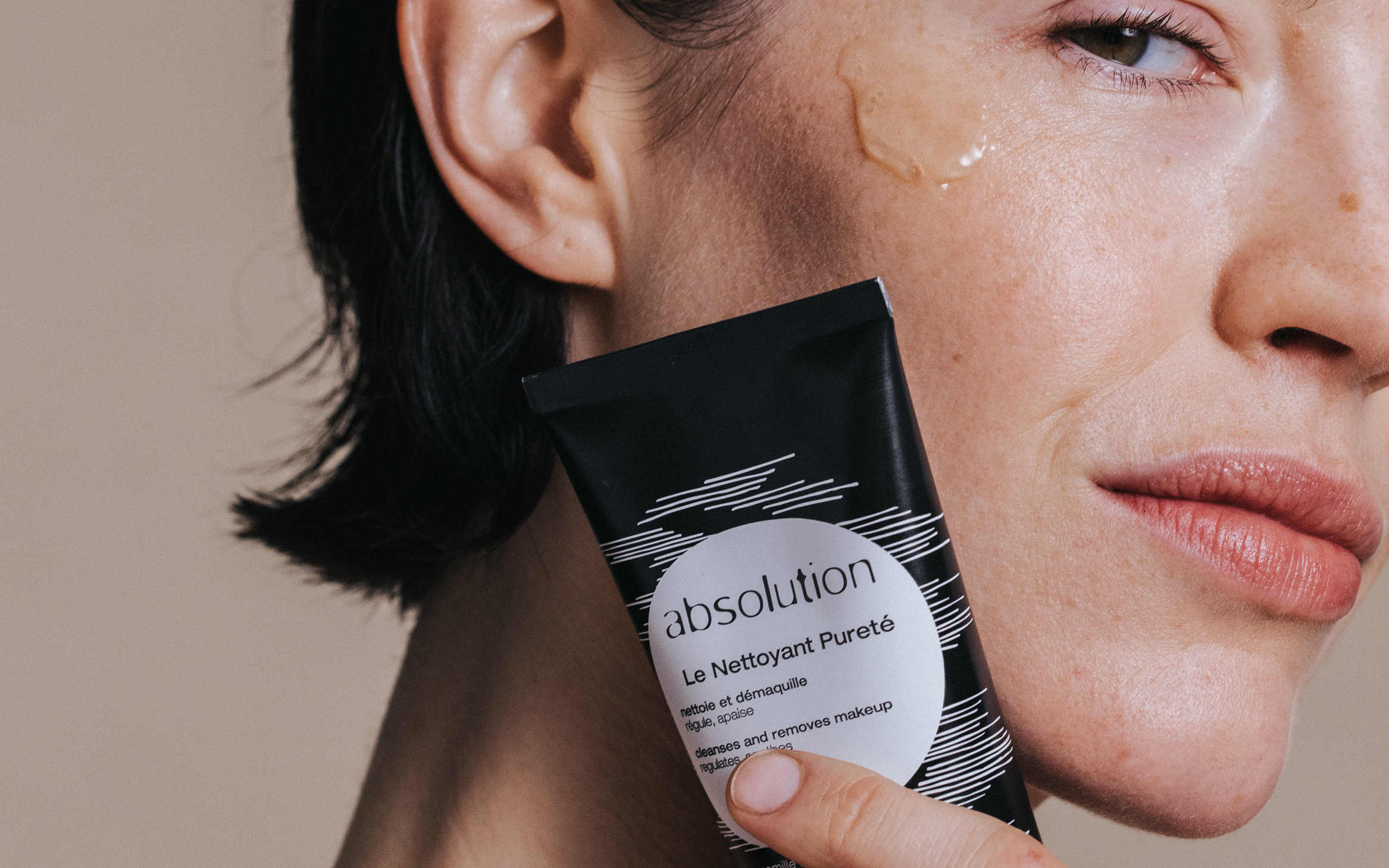
Next, apply a fine layer of your organic exfoliator on the face. Leave for a few minutes so the natural active ingredients can dissolve dead cells, then massage gently with circular movements over the nose, chin, cheeks, forehead and neck. If your skin is very sensitive, skip the massage step. Simply let the product work for a few minutes, then rinse thoroughly with clean water to remove all residue.
Good to know: don’t forget to nourish your skin
After exfoliating, moisturize your skin well to restore its moisture balance. Use a light moisturizing cream that’s suited to oily skin, such as La Crème de Santé, to keep skin hydrated without clogging pores.
Absolution’s face scrub: La Crème Gommante
Certified organic by Ecocert Greenlife, Absolution’s La Crème Gommante harnesses the benefits of plants in order to eliminate dead cells and help prevent blackheads. This product works with all skin types, including extra-sensitive skin, and boosts cell renewal. It can be used as an enzymatic or mechanical exfoliant. The AHAs in the formula dissolve dead cells, but the product also exfoliates gently when massaged over the skin.
AHAs, aloe vera, and granules derived from the fossil shells of diatom microalgae, work together to exfoliate your skin and leave it feeling soft and comfortable.
The use of an oil suitable for oily skin, made with organic ingredients, is also recommended.
3 points to remember:
- Face scrubs are essential to help regulate sebum and purify oily skin, and should be used twice a month.
- Give priority to products made with natural ingredients such as aloe vera and AHAs, to gently exfoliate.
- Take care of your oily skin by looking after your body inside and out.
1 The epidermis and keratinocyte differentiation (French only)
